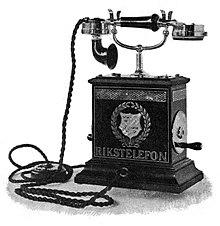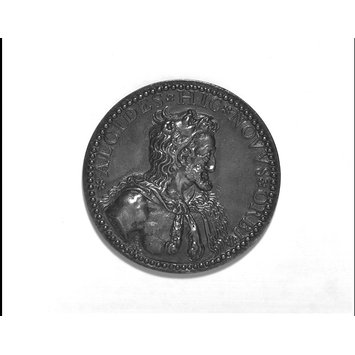Prince de BORODINO (Saint-Loup’s cavalry captain at Doncières; not a real person). However Proust biographer George D. Painter thinks that Prince de Borodino is based on Count Alexandre Joseph Colonna-Walewski. ROUHER, Eugène (Minister under Napoleon III, 1814–84): III 171
FOULD, Achille (Minister of Finance under Napoleon III, 1844–1924)
NAPOLEON I (BONAPARTE) (Emperor of France, 1769–1821): Napoleon Bonaparte (15 August 1769 – 5 May 1821) was a French military and political leader who rose to prominence during the latter stages of the French Revolution and its associated wars in Europe. As Napoleon I, he was Emperor of the French from 1804 to 1815. His legal reform, the Napoleonic Code, has been a major influence on many civil law jurisdictions worldwide, but he is best remembered for his role in the wars led against France by a series of coalitions, the so-called Napoleonic Wars. He established hegemony over most of continental Europe and sought to spread the ideals of the French Revolution, while consolidating an imperial monarchy which restored aspects of the deposed Ancien Régime. Due to his success in these wars, often against numerically superior enemies, he is generally regarded as one of the greatest military commanders of all time, and his campaigns are studied at military academies throughout much of the world. Napoleon was born in Corsica to parents of noble Genoese ancestry. He trained as an artillery officer in mainland France. He rose to prominence under the French First Republic and led successful campaigns against the First and Second Coalitions arrayed against France. He led a successful invasion of the Italian peninsula. NAPOLEON III (French leader, 1808–73). Charles Louis-Napoléon Bonaparte (20 April 1808 – 9 January 1873) was, as Louis-Napoléon Bonaparte, the first President of the French Republic 12/20/1848–12/2/1852 and, as Napoleon III, the emperor of the Second French Empire. He was the nephew and heir of Napoleon I. Elected President by popular vote in 1848, he initiated a coup d'état in 1851, before ascending the throne as Napoleon III on 12/2/1852, the forty-eighth anniversary of Napoleon I's coronation. He ruled as Emperor of the French until 4 September 1870. He holds the unusual distinction of being both the first titular president and the last monarch of France. The Second French Empire was overthrown three days after Napoleon's disastrous surrender at the Battle of Sedan in 1870, which resulted in both the proclamation of the French Third Republic and the cession of Alsace-Lorraine to the newly formed German Empire. After six months as a prisoner in Germany Napoleon spent the last few years of his life in exile in England, with Eugénie and their only son. The family lived at Camden Palace, Chislehurst, where he died on January 9, 1873 during surgery for a bladder stone; an autopsy showed he also had a fatal kidney disease. He was haunted to the end by bitter regrets and by painful memories of the battle at which he lost everything; Napoleon's last words, addressed to Dr. Henri Conneau standing by his deathbed, reportedly were, "Were you at Sedan?" He had many mistresses. His father was Louis Napoléon Bonaparte, Prince Français, Comte de Saint-Leu (2 September 1778 – 25 July 1846), King of Holland (1806–10), was the fifth surviving child and the fourth surviving son of Carlo Buonaparte and Letizia Ramolino. His brother was the first Emperor of the French, Napoleon I, and his son was the last, Napoleon III. BISMARCK, Otto von (German statesman, 1815–98). Struck by Prince de Borodino’s resemblance to Napoleon III: III 168. (person) Napoleon III was taken prisoner at Sedan and kept in Germany for a while in case Bismarck had need of him to head a puppet regime; he later died in exile in England in 1873. The remainder of the war featured a siege of Paris, the city was ”ineffectually bombarded”; the new French republican regime then tried, without success, to relieve Paris with various hastily assembled armies and increasingly bitter partisan warfare. Sedan, Ardennes, France: During the Franco-Prussian War, on 2 September 1870 the French emperor Napoleon III was taken prisoner with 100,000 of his soldiers at the First Battle of Sedan. Due to this major victory, which also made the "Second Reich" of Germany possible, 2 September was declared "Sedan Day" (Sedantag) and a national German holiday in 1871. It remained a holiday until 1919. House of Hohenzollern is a noble family and royal dynasty of electors, kings and emperors of Prussia, Germany and Romania. It originated in the area around the town of Hechingen in Swabia during the 11th century. They took their name from their ancestral home, the Burg Hohenzollern castle near Hechingen. Gaston Alexandre Auguste, Marquis de Galliffet: Prince de Martigues (Paris, January 23, 1830 – July 8, 1909), was a French general, best known for having taken part in the repression of the 1871 Paris Commune. He was Minister of War in Waldeck-Rousseau's cabinet at the turn of the century, which caused a controversy in the socialist movement since independent socialist Alexandre Millerand also took part in the same government, and was thus side by side with the Fusilleur de la Commune ("Commune's executor"). General François Oscar de Négrier (2 October 1839 – 22 August 1913) was one of the most charismatic French generals of the Third Republic, winning fame in Algeria in the Sud-Oranais campaign (1881) and in Tonkin during the Sino-French War (August 1884 – April 1885). Paul Marie Cesar Gerald Pau, (November 29, 1848- January 2, 1932) was a French General, a commander of an army at the beginning of World War I. GESLIN DE BOURGOGNE, Jules-Henri, (French military leader, 1818-77)
Charles THIRON (French actor, 1830-91)
Frédéric Febvre (1835–1916) was a French actor. Born in Paris, after the usual apprenticeship in the provinces and Parisian theatres, was called to the Comédie-Française in 1866, making his debut as Philip II in Don Juan d'Autriche. He soon became the most popular leading man in Paris, not only in the classical repertoire, but in contemporary novelties.
AMAURY [Ernest-Félix Socquet] (French actor, Odéon troupe, 1849–1910): Amaury (Ernest-Félix Socquet, dit), acteur français, né à Paris en 1819. Elève du Conservatoire, il y obtint doux accessits de comédie el tragédie, et en sortant de l'école fut engagé à l'Odéon, où il n'a jamais quitté.
 p 251 | Queen of the Belgians (Louise of Orleans, 1812-50)
p 251 | Queen of the Belgians (Louise of Orleans, 1812-50)






.jpg)





